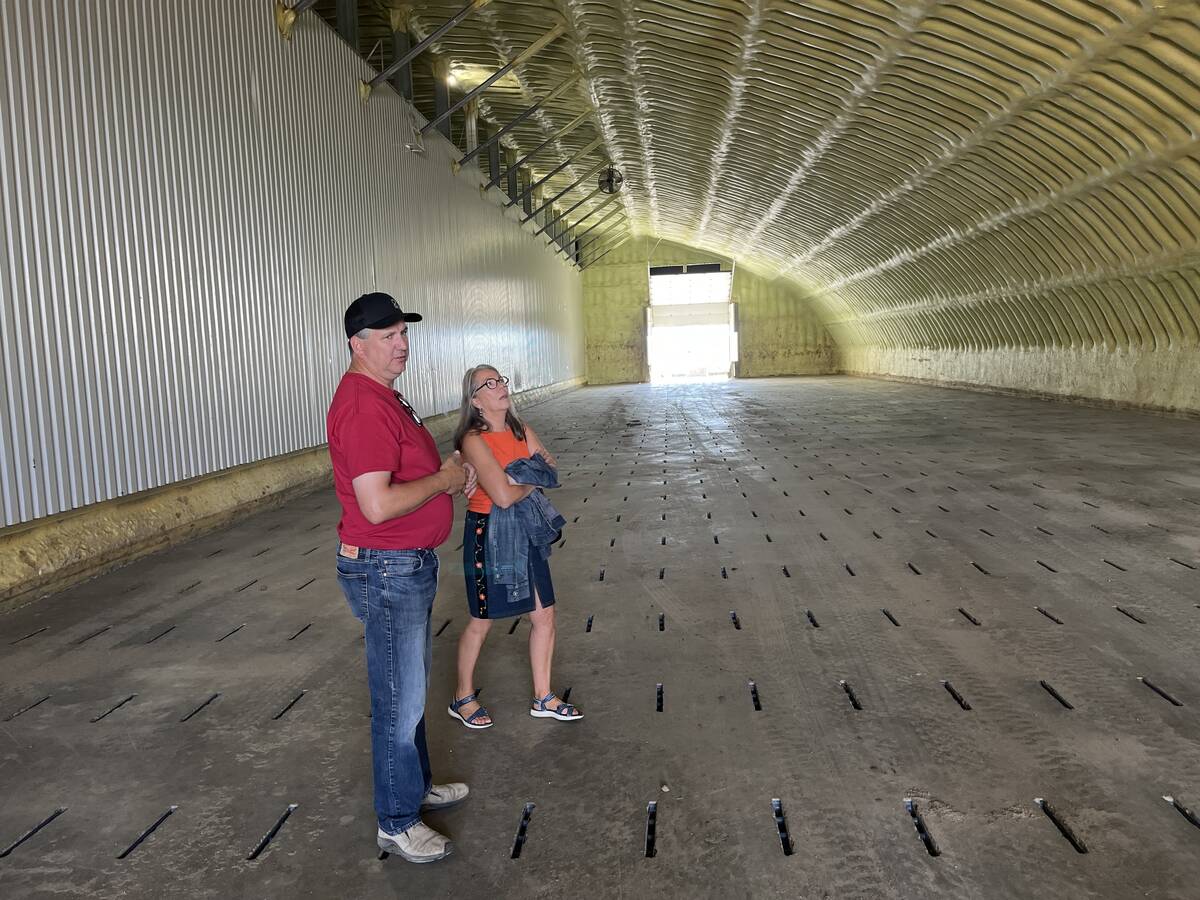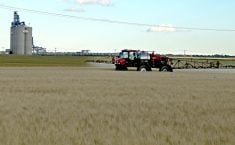A non-profit organization in Texas wants to help farmers and ranchers get paid for ensuring the natural removal and storage of carbon dioxide emissions using their grazing land.
“We believe nature-based carbon trading will be a major part of the economy of the future,” said Jim Blackburn, who is a board member at BCarbon.
It will help carbon-emitting industries and the agricultural community, he told a recent webinar hosted by the Western Stock Growers’ Association.
“We believe that ecological services that are provided by the land are more valuable than they are currently valued in our economic system and we believe that dollar value for ecological services will become an important part of this economy of the future.”
Read Also

Potato farm requires year-round management
The most recent Open Farm Day in Alberta showcased agricultural producers across the province educating the general public about the process that is required is to get food to their table.
BCarbon is an independent organization founded in 2020 that certifies increases in soil carbon and issues carbon credits. It is based on a voluntary certification standard involving the verified measurement of the removal of carbon dioxide from the atmosphere via plant roots and microbes in the soil.
The initiative grew out of a soil carbon working group at the Center for Energy Studies at the Baker Institute for Public Policy, a think-tank at Rice University in Houston, Texas.
“Landowners create carbon in the soil,” said Blackburn, who is a professor in environmental law at the university.
“Once you start measuring, then you know what that commodity is that you are basically gathering in the soil… but the basic concept is that if you can grow it and can prove that you’ve grown it, then you can sell it.”
Companies seeking to purchase credits want to know they’re buying something real, not phantom or ghost credits based on estimates from things such as computer modelling, said Blackburn. “They want test results they can depend on. We’re talking about carbon that has been physically added to the inventory in the soil.”
BCarbon’s methodology was one of only two out of 14 to receive the highest rating in a study by Carbon Plan, an independent non-profit that reviews carbon credits. Other standards based on the Kyoto Accord prohibit landowners from participating if it makes economic sense for them.
They are also blocked if they are already practising regenerative agriculture, or it is common in their area. Such protocols “do not work for landowners — if they did, we would have seen the development of the soil carbon market years ago,” said a statement by Texas-based Grassroots Carbon, which is one of the stakeholders in BCarbon.
The BCarbon standard comes as the demand for carbon credits is growing, said Megan Parks, executive vice-president and co-founder of Grassroots Carbon. For example, Shell made a commitment last year to use nature-based solutions to offset about 120 million tonnes of emissions per year by 2030.
However, the carbon market is still in its early Wild West days of development, said Parks. “There’s skepticism on the landowner side and there’s also skepticism on the carbon storage buyer side, so the landowners, what we’re hearing is they want to get a fair deal.”
Grassroots Carbon partners companies looking to reduce their carbon footprints with landowners who are engaged in regenerative practices that promote soil health and boost carbon storage on grazing land.
It uses the BCarbon standard, which requires landowners to agree not to plow their land or use inputs such as synthetic fertilizers or pesticides for 10 years.
“Some of the other standards have a minimum of a 30-year commitment, and we have found that most people don’t want to sign the longer agreements,” said Parks.
However, it is important to note BCarbon’s system involves a rolling commitment that keeps moving ahead for every year landowners issue credits and are paid, she added.
“If your first year is 2022, you’re on the hook until 2032 to not plow up that land … you get paid again next year, now it extends it out a year to 2033.”
Producers who sign up via Grassroots Carbon receive 80 percent of the revenue after the subtraction of costs such as field measurements and analysis of soil samples by laboratories, along with certification costs charged by a verifier.
Meanwhile, 10 percent of the credits are held in a buffer account by BCarbon in case the contract is not honoured, she said. They are released to producers once the 10-year rolling commitment has expired.
Although there are no guarantees and Mother Nature is in charge, landowners with large properties engaging in beneficial land management practices in good climate zones can earn a substantial amount of money, she said. She cited the hypothetical example of a 5,000-acre ranch earning up to US$937,000 over five years.
Companies that have bought credits through Grassroots Carbon include Shopify, a multinational e-commerce firm headquartered in Ottawa, said Parks. “They were actually our first customer and they have taken a real leadership role in learning about this market.”
Grassroots Carbon conducted a pilot project last year involving producers who were already improving their land through adaptive multi paddock grazing, she said. It involves rotating livestock through a series of paddocks to give vegetation time to recover before being grazed again.
It aims to mimic what bison once did to bring back native prairie from degraded land, she said. “And so, one of the things we’re doing by selling soil carbon storage credits from grazing is experimenting to find out whether carbon finance has the potential for a big additional revenue stream for carbon … to attract more people to have an openness to learn about this way of managing.”
Blackburn said that “ecologically, grasslands are among our most depleted natural systems, and to bring back a strong ecological diversity is one of the things we want for carbon.
“It also, I think, will become an economic powerhouse over time. I think these credits will do nothing but go up in value over time, and … they’re much cheaper than the technological alternatives that are out there.”
Besides grasslands, some cropping techniques that eliminate plowing could potentially also be as viable for carbon storage, he said. He pointed to initiatives involving no-till agriculture in the United Kingdom using cover crops.
The economy of the future will be circular because it will incorporate the carbon cycle and the hydrologic cycle, “basically getting our economic system more in tune with the economic and ecological system of the Earth,” said Blackburn. “We see a lot of potential for this economy of the future, and frankly, we see a lot of land use change coming.”


















